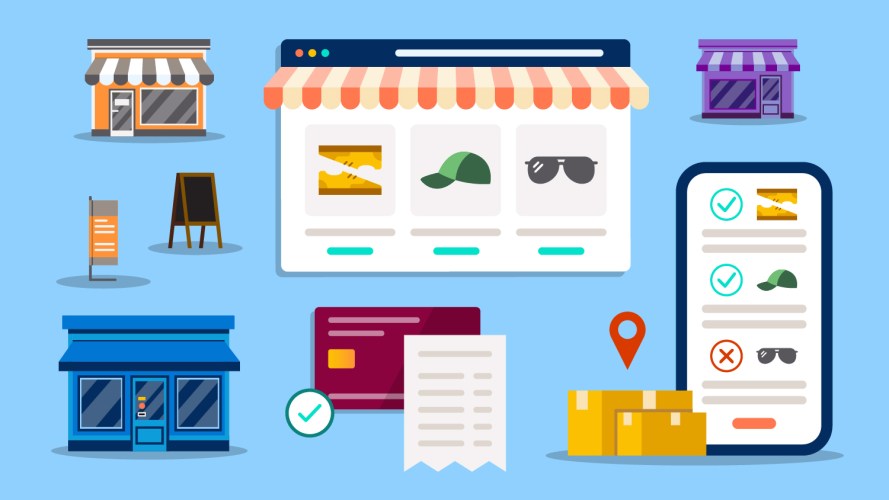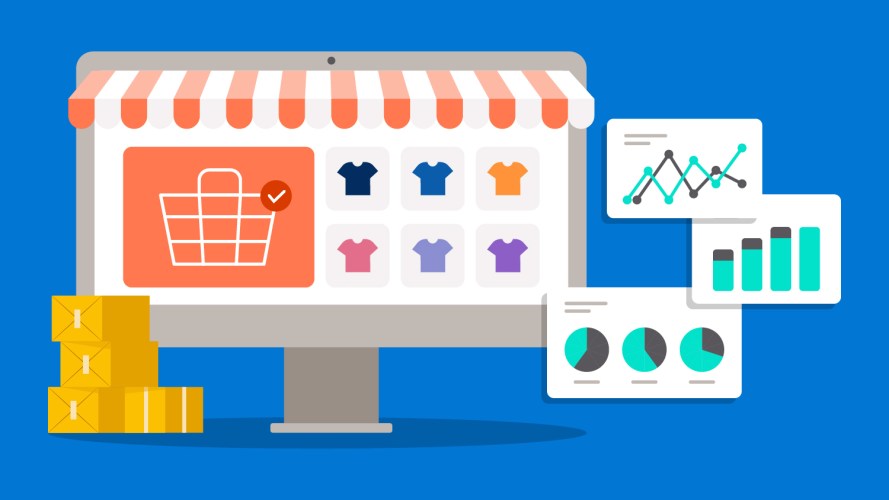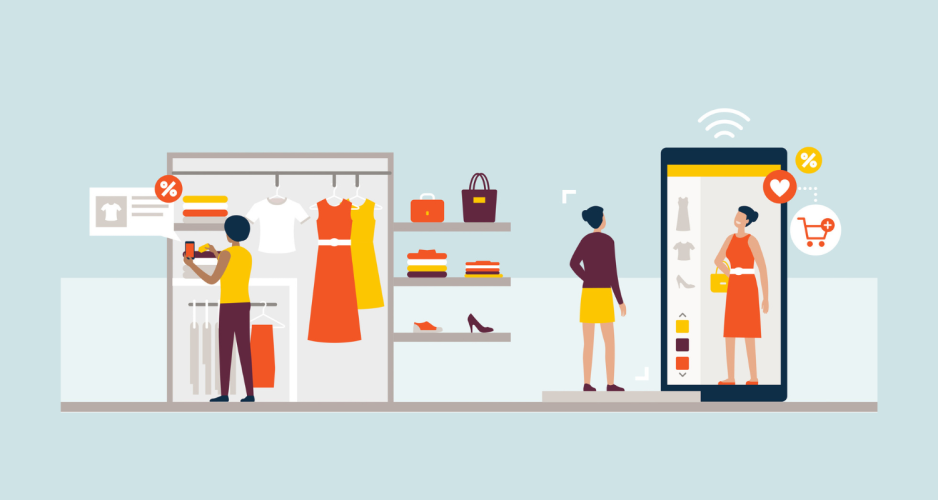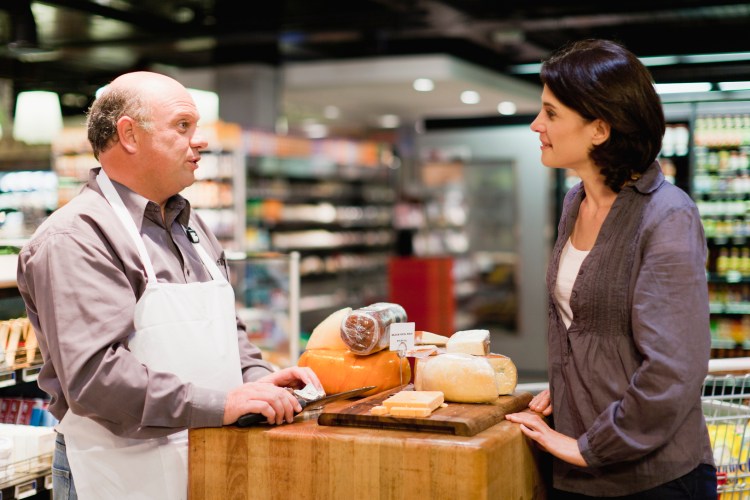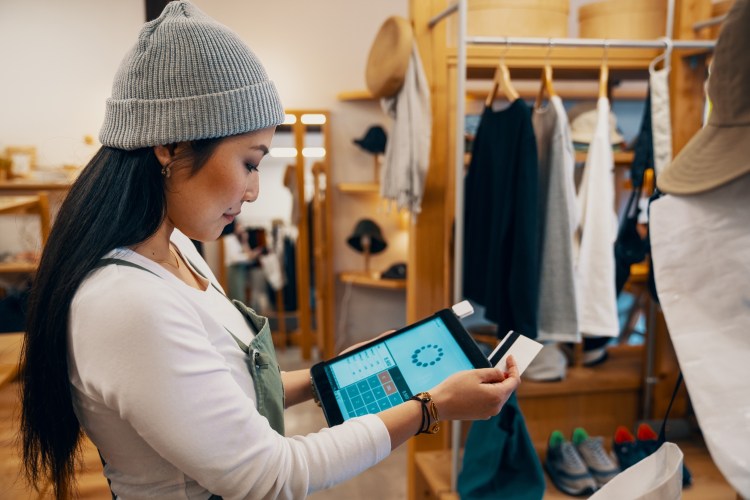Online Sales Are Falling for the First Time — Here’s Why
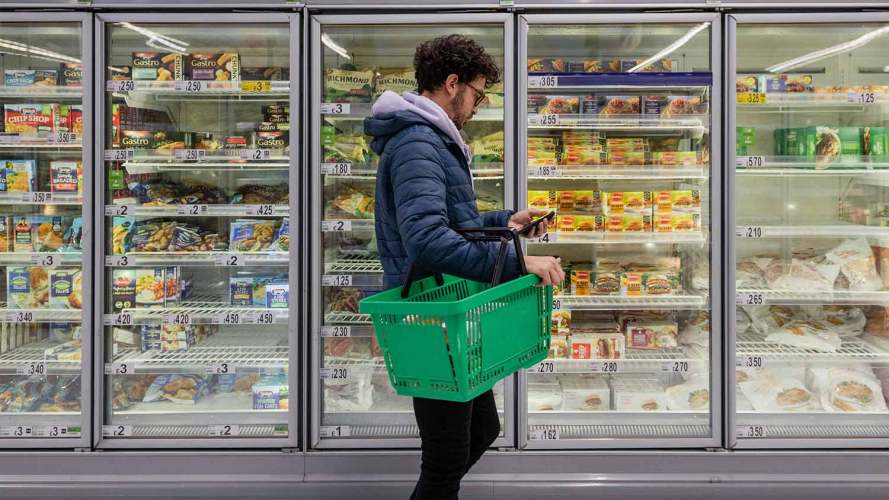


Is this a rebalancing or something more serious? Consumer optimism (or uncertainty) could drive 2022 results.

Caila Schwartz
Rising inflation, geopolitical concerns, an energy crisis, and a continued supply chain disaster are plaguing the first half of 2022 and challenging retailers on many fronts. We’re also starting to see a long-expected dip in consumer optimism.
All this comes on the heels of the COVID-19 pandemic, during which digital shopping reached epic levels of consumer adoption. Now, as we transition from lockdowns to restrictions to reopenings, our data shows that the expected rebalancing between digital and physical commerce might finally be here. But is this truly a rebalancing or something more foreboding beneath the surface of the economy?
The answer is complicated. According to the Salesforce Shopping Index, global same-site sales were down 3% year-over-year (YoY) in the first quarter of 2022. This marks the first time in the Index’s history that digital sales fell. What drove the decline? A combination of slight slowdowns both in traffic (-2%) and shopper spend (-1%). Order volumes were also down 12% from a year earlier, suggesting a strong pullback by consumers globally.
This leveling off was inevitable given that global digital sales soared 57% in 2020 and 16% in 2021. But digital engagement is still very high. The two-year online sales growth rate reached 65% globally in the quarter.
Moving forward, we can’t gauge performance based on digital sales versus brick-and-mortar. Rather, as we see an inflection point for digital, we must look at how channels work symbiotically to remove friction for consumers traversing an average of nine distinct touchpoints during a single shopping journey.
What does this tell us about the remainder of 2022? Let’s take a look at potential growth opportunities for retailers.
Use real data from over 1 billion shoppers
Understanding and responding to online shopping behavior is essential to driving ecommerce growth. Salesforce data can help you analyze the effectiveness of digital shopping channels and features.



Consumer optimism is waning
Worldwide, consumers are facing historic levels of inflation that haven’t let up since early 2021. According to Salesforce Shopping Index data, the UK and Spain led Europe in the first quarter of 2022 with average unit retail (AUR), also known as average unit selling price, growing 7% YoY in each country. The U.S. saw average unit selling prices rise 11% from a year earlier in the quarter, meaning consumers are continuing to see big price increases a year after the first talk of inflation.
Economists are sounding the alarms of a possible global recession. Salesforce’s Shopping Index reflects some of those global economic pressures in first-quarter results in Europe:
- Online sales and order volumes are down all across Europe except for Spain.
- The Netherlands saw the biggest declines, with spend falling 27% YoY and order volume dropping 30% YoY.
- The UK saw a 9% decline in online sales and a stunning 24% decline in order volume.
Additionally, there is speculation that consumer optimism is waning due to geopolitical instability in the region. If current trends continue, Europe is likely a leading indicator of global consumer spending for the remainder of the year.
What options are available to brands and retailers facing rising inflation, declining consumer optimism, and increasing economic instability?
- Enhance private labels: Create brand affinity and increase margin.
- Engage loyal customers: Leverage first party data to drive relevant and personalized experiences across channels.
- Optimize the supply chain: Address both last-mile and first-mile challenges with more agile inventory allocation, visibility, and fulfillment.
- Expand marketplaces: Extend assortments throughout the partner ecosystem.
As digital matures, strategy must evolve
How will consumers prefer to shop as they emerge from pandemic restrictions? With digital sales in a dip, one vertical may provide a clue as to what’s in store.
During the pandemic, consumers turned to online grocery shopping for safety and convenience. Food and beverage brands and retailers, traditionally digital laggards, got scrappy and set up online storefronts or partnered quickly in response.
That resulted in aggressive growth – a 57% sales increase in 2020 and 93% sales growth in 2021. Online grocery sales grew an astonishing 93% YoY in the first three months of 2021, setting an unsurpassable baseline. In the first quarter of this year, however, both essential and non-essential retailers saw store traffic return to pre-pandemic levels.
As a result, the food and beverage industry saw:
- Online sales decline 25% YoY. This made it the fastest-shrinking category in online sales across all verticals tracked in the Shopping Index.
- Online consumption fall, with order volumes down 37%.
- Online traffic falling by 18%.
While this sounds like doom and gloom on the surface, the vertical’s digital engagement is still at record numbers, with a two-year online sales growth rate of 45% (as compared to 65% across all verticals).
This vertical, and the industry at large, has hit a tipping point. With a new level of convenience and a frictionless shopping process, consumers are gravitating to seamless and automated cross-channel experiences. In fact, 57% of consumers have bought an item online to pick up in store and a quarter of shoppers are using their phones while in the store to do their own research and engage with QR codes.
Finding ways to merge the shopping experience across both digital and physical spaces enhances the value of each channel. This will be a key differentiator throughout 2022.
For brands and retailers, the opportunities lie in reducing friction and improving experiences across these three areas:
- Digital content: Engage shoppers online and combat falling consumer optimism with content that inspires, offers convenience, and drives loyalty.
- Fulfillment: Offer multiple options at checkout. Put the consumer in charge of their fulfillment journey.
- Checkout convenience: Both in-store and online checkout experiences should be seamless and easy. This includes one-touch or one-tap options and integrated mobile engagement opportunities throughout the journey.
Mobile sales data shows room for growth
Shopping on mobile phones has had a meteoric rise over the last several years and shopping experiences on the smaller screens progressively improved. Our data shows that mobile usage has peaked worldwide as the share of shopping traffic from mobile devices has remained steady at around 71% over the last nine quarters.
But brands and retailers must continue to innovate in this area. While mobile users made up 71% of shopping traffic, mobile purchases were only at around 60% of total ordering. That suggests the mobile checkout experience is still too cumbersome for many.
Removing friction in the mobile checkout process likely should increase conversion and help steal market share as digital sales level out. Here are three ways retailers can reduce mobile friction:
- Explore mobile wallets: Remove friction at checkout with ApplePay, PayPal, and any of the Buy Now Pay Later services.
- Improve mobile product detail pages: Ensure that your product detail page loads quickly and is optimized for the small screen.
- Incorporate artificial intelligence: Reduce the taps to product discovery via predictive product recommendations.
Can these first-quarter shopping trends really give us a clue as to what will happen later in the year? Early signs show that consumers have adopted and are retaining their learned digital behaviors since 2020 – and retailers must apply this in the physical and virtual worlds.
Connected and seamless experiences across all channels will be the key differentiator moving forward. But things could get challenging if the economy remains shaky. Sustained inflation could make a big impact on consumer optimism, which has been high over the past couple years, leading to a boom in discretionary spending.
Finding where the friction exists in an organization and optimizing the experience across all channels enables growth opportunities, even in the face of an uncertain economy.
Methodology
Powered by Commerce Cloud, the Q1 Shopping Index uncovers the true shopping story by analyzing the activity and online shopping statistics of more than 1 billion shoppers across more than 64 countries, with a focus on 12 key markets: U.S., Canada, U.K., Germany, France, Italy, Spain, Japan, Netherlands, Australia/New Zealand, APAC (excluding Japan and ANZ) and the Nordics. This battery of benchmarks provides a deep look into the last nine quarters and the current state of digital commerce. Several factors are applied to extrapolate actuals for the broader retail industry, and these results are not indicative of Salesforce performance.
Drive costs down and loyalty up all year long
Reimagine your brand loyalty program with tips that power retail success now.




